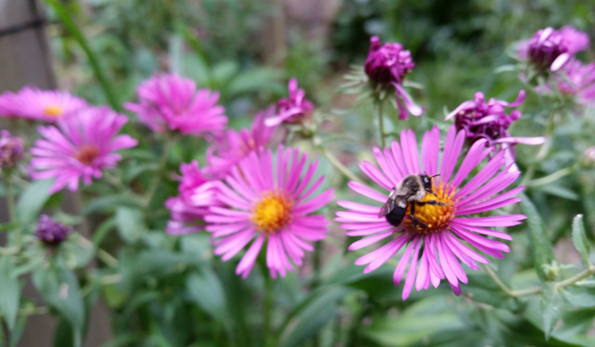Why Plant Native Plants?
Native plants deserve a place in our gardens for many reasons. Native plants are local to our area, which means they are already well adapted to our region’s climate. They can tolerate the cold winters, the hot, humid summers, and don’t need a lot of care once established. This means less watering, fertilizing and less replacing of dead plants. Our diverse region is home to native plants suitable for all types of gardens, from damp and shady to sunny and dry, with many attractive flowers, grasses, shrubs and trees you can choose from. Consider planting native plants on your own property as part of a Conservation Landscape.

Each spring and fall, Arlington Parks and Recreation holds a Native Plant Sale.
Planting native also helps enrich the environment by providing food and habitat for many species. The local plants have evolved with our local insects, birds, and wildlife and they rely on each other for survival. Many of our native plants are also hosts for caterpillars, which turn into butterflies, and are an important food source for growing chicks in the nest. Flowers can provide nectar for moths, butterflies and hummingbirds and pollen for bees, flies and beetles. These animals in turn help pollinate plants to make fruits and seeds. Those seeds in turn will be eaten by many birds and mammals in the fall and help them survive the winter.
Fall is the best time of year for planting. It’s the time of year when most plants are focusing on growing and expanding their roots, helping them to establish and come back strong in the spring. Plus the wet mild weather of the season means less time, water, and maintenance to keep plants alive and thriving.
Start diversifying your garden by adding natives. Not only will they increase the aesthetic value of your yard, they will also enhance its value to wildlife as well.